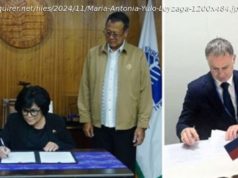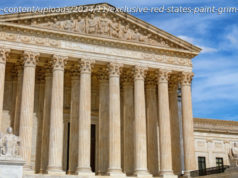SeaWorld is best-known for its marine life and thrill-rides but the real magic takes place behind the scenes.
You don’t have to spend long in SeaWorld to realise it isn’t like other theme parks in Orlando. There’s no gleaming tower at the entrance, just a street which looks like it would be at home in the Florida Keys. Stores are set inside quaint-looking houses with porticoes and pastel-colored clapboard sidings. Instead of being neatly cropped, trees hang over many of the paths making it seem like they have been carved out of the countryside. Unusual as this is, the real magic is behind the scenes.
Although it is best-known for its marine life and thrill-rides, New York-listed SeaWorld Entertainment runs one of the largest animal rescue programs in the United States. Since the first SeaWorld park swung open its gates in San Diego in 1964 the company has helped more than 33,000 animals with more than 2,100 rescued and rehabilitated last year alone.
SeaWorld staff tend to a rescued manatee SeaWorld Entertainment
That message has been watered down in recent years following the release in 2013 of a documentary called Blackfish which raised questions about SeaWorld’s treatment of its killer whales. The theme park operator has long defended its practices but eventually decided to transition its orca shows to more educational encounters. It will still have orcas at its parks for many years to come and there is good reason for this.
Although Orcas are not endangered as a species, according to the World Wildlife Fund, some local populations are considered threatened or endangered due to a number of factors including pollution and whaling. SeaWorld says it has committed to pouring $10 million into research and conservation of killer whales in the wild which is the largest private commitment of its kind. It is another message which has been lost over the past few years as the company found itself in the eye of a publicity storm.
SeaWorld has made it through the choppy waters and as we have reported, it has had several consecutive quarters of growth in revenue with attendance over the first nine months of this year up by 1.4 million on the same period in 2017. Its stock price has also swelled by a staggering 84.6% over the past six months to close at $29.34 on Friday. As the clouds have cleared it has brought the company’s conservation efforts back into focus.
A report last month in the Orlando Sentinel revealed that so far this year, SeaWorld has cared for 55 manatees – more than ever before. A total of 15 alone have been afflicted by the toxic algae bloom known as red tide which has plagued Florida for months. SeaWorld’s rescue team sees the worst of this as it is available 24/7,365 days a year and is often the 911 call from local, state and federal agencies.
Several of the manatees were brought to SeaWorld by the Florida Fish and Wildlife Conservation Commission (FWC), a state agency which manages and regulates fish and wildlife resources. It is a frequent occurrence as manatees are often injured by boats which is part of the reason they are considered to be a threatened species.
Commonly known as sea cows because of their aquatic plant diet, manatees are slow-moving and can be found in shallow rivers or coastal areas so are particularly at risk of being cut by propeller blades. According to the FWC, 520 manatees died in Florida last year, including a record 104 killed by boat strikes.
Few guests to SeaWorld will be aware that animals are treated in an extensive rescue facility hidden away behind the park. As it doesn’t just cater for its own animals, it has to keep space free in case there is a local emergency like the red tide. The Orlando Sentinel report said that six of the manatees affected by it recovered within a day or so and were transferred to other facilities in Florida to ensure that SeaWorld had room for more. That’s just the start.
The company casts a wide spell thanks to the SeaWorld & Busch Gardens Conservation Fund, a non-profit private foundation which has awarded more than $11 million in conservation grants to over 800 organizations since it was set up in 2003. Guests in the parks donate to it and every cent of the funding goes towards on-the-ground wildlife conservation projects.
They range from reintroducing cheetah to their native ranges in Namibia to hiring guards to protect elephants from poachers and cleaning up North American beaches littered with marine debris. In addition to these popular causes, it also backs less well-known but equally valuable initiatives such as the Mexican government’s VaquitaCPR conservation plan.
Sea Turtles have also benefited from SeaWorld’s magic touch SeaWorld Entertainment
Vaquitas are tiny porpoises which are only found in Mexico’s Gulf of California and are the most critically endangered marine mammal in the world. The mission of VaquitaCPR is to locate, rescue and care for vaquitas in a safe haven with the ultimate goal of returning them to an environment free from vertical fishing nets.
SeaWorld doesn’t just contribute cash and care to these kind of causes but also breaks new ground. The company says that specialist staff have been carrying out scientific research at its parks for nearly five decades and the results have been published in hundreds of peer-reviewed journals. It adds that research at SeaWorld is also performed by scientists from national and internationally renowned universities and research organizations such as UCLA and the San Diego Zoo.
All of the SeaWorld parks are accredited by the Association of Zoos & Aquariums and they give back to the industry too. The company says that its animal rescue and care experts have made a number of innovations over the years including creating prosthetic beaks for injured birds and developing an ‘animal wetsuit’ to help injured manatees stay afloat. That really is a happy ending.
I write about the business of Formula One auto racing as well as the theme park industry and have been doing this since 2002. My colleague Caroline Reid and I are the only journalists worldwide who specialise in covering the business of F1 and we write for more outlets than…
I cover the F1 and theme park sectors.






